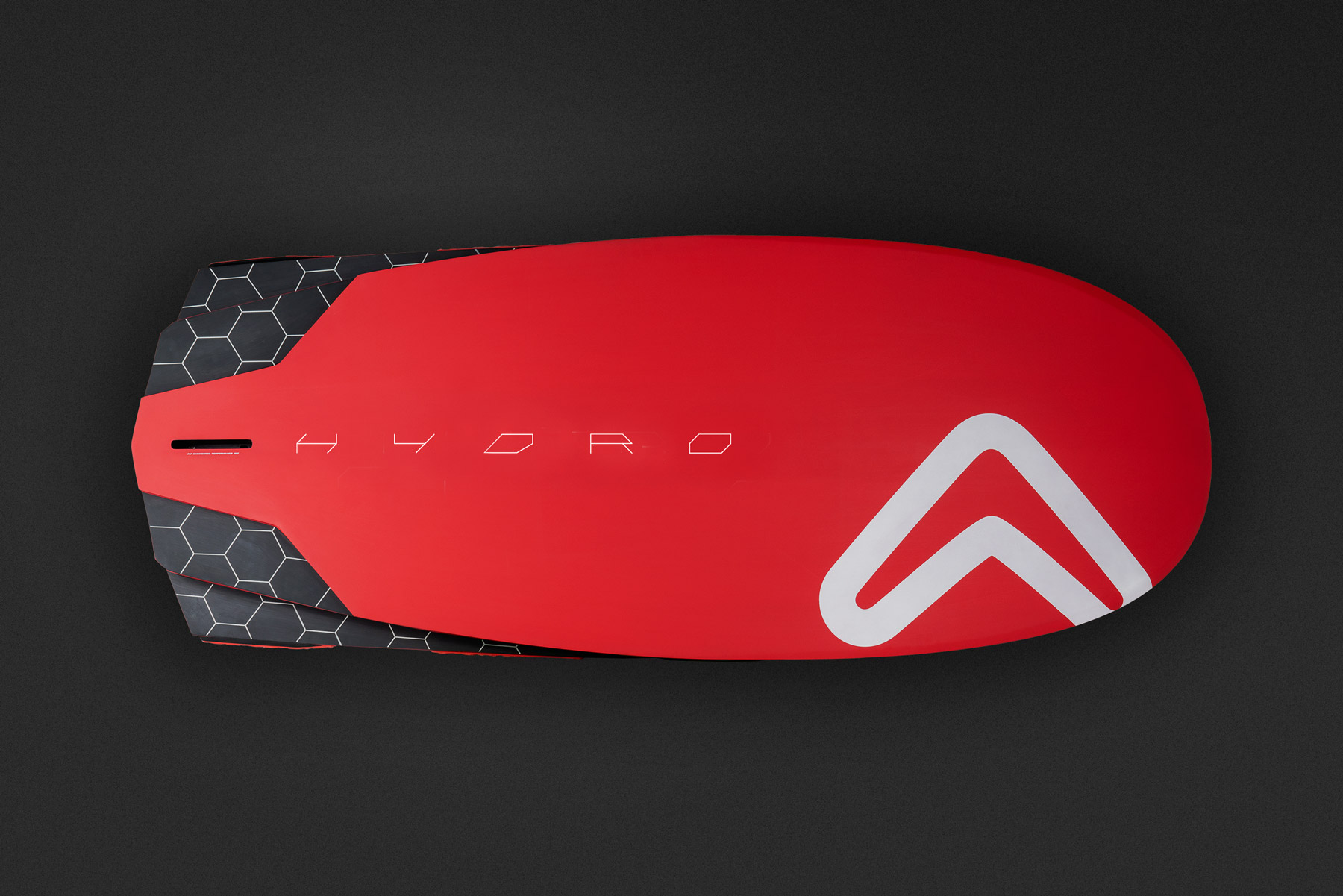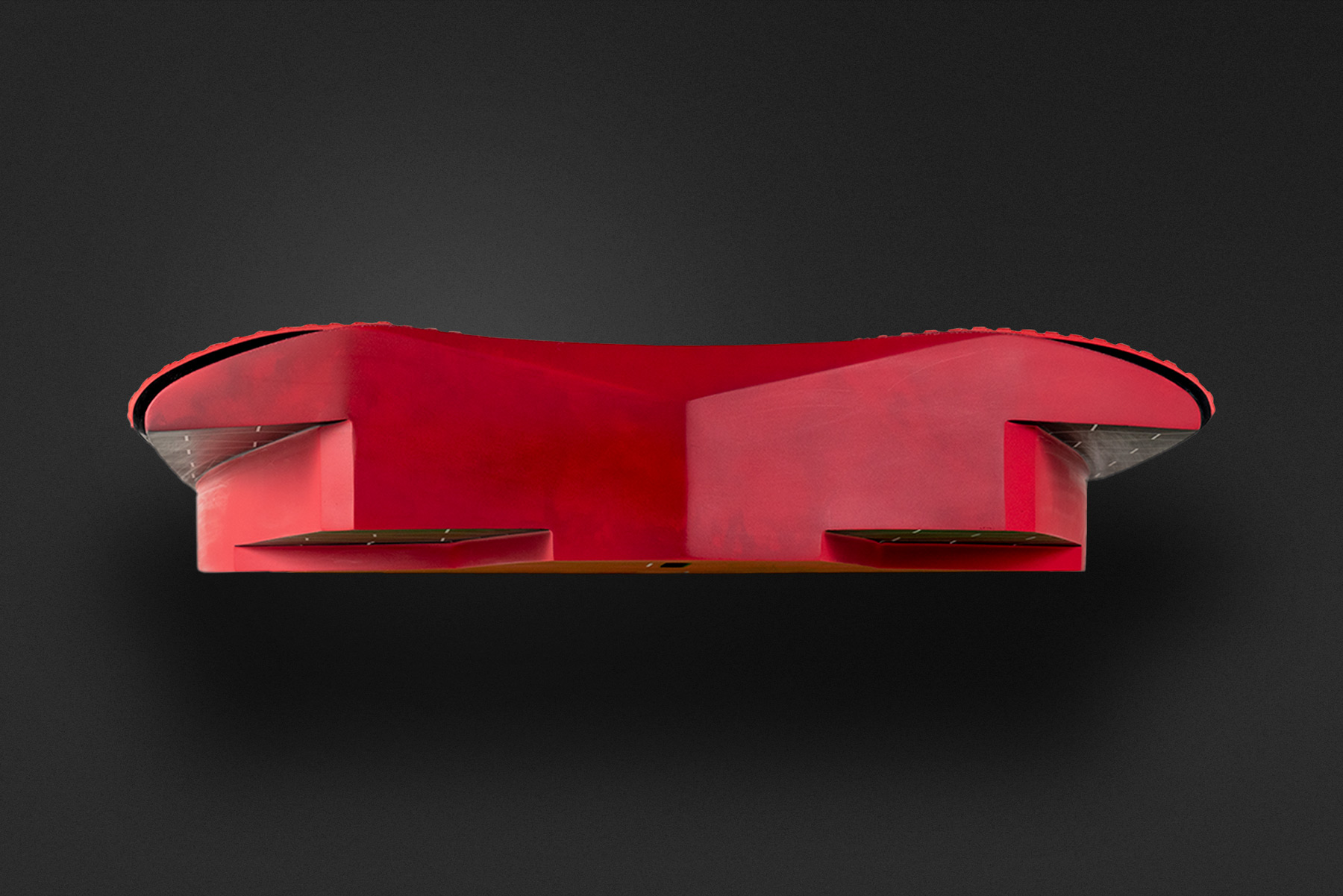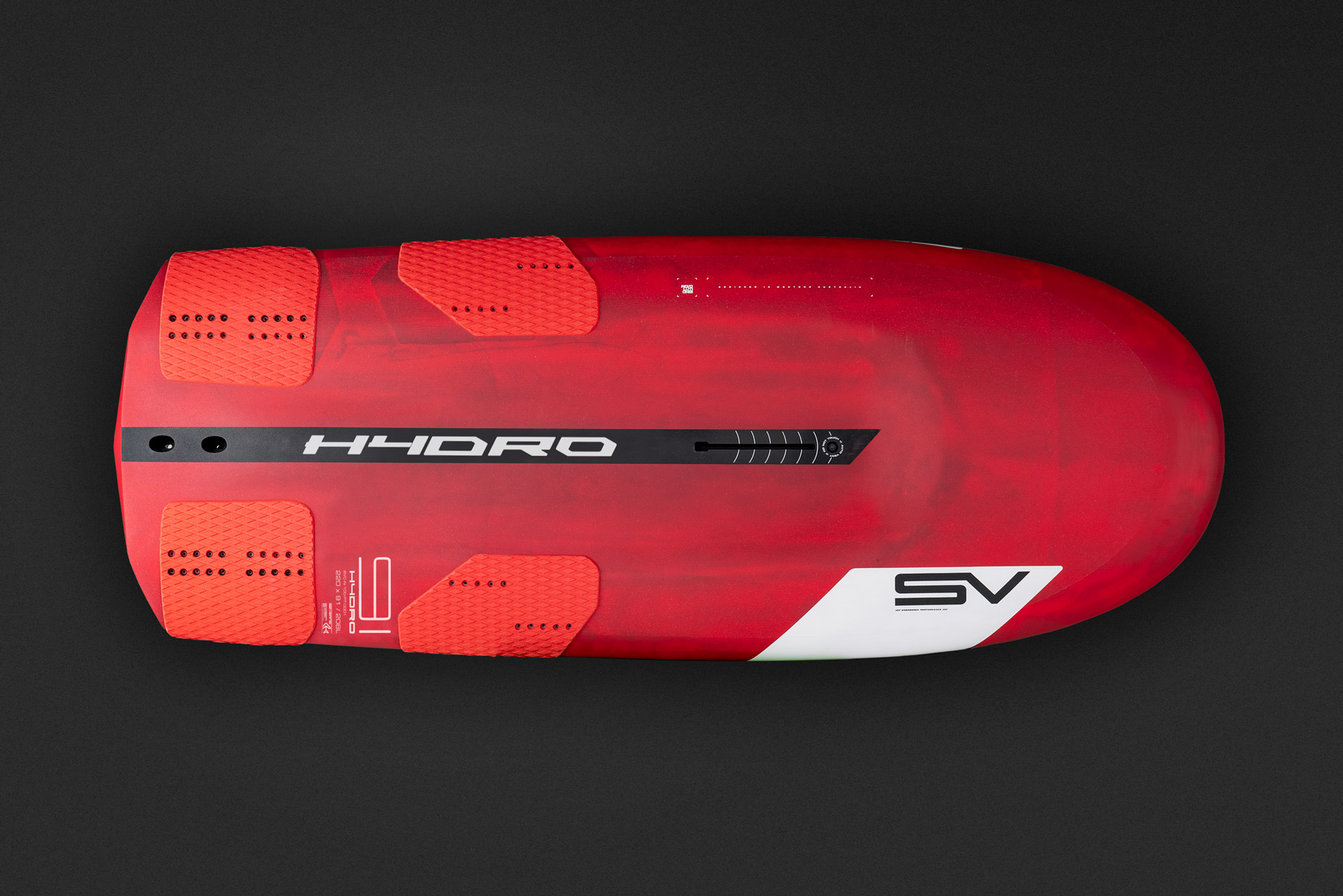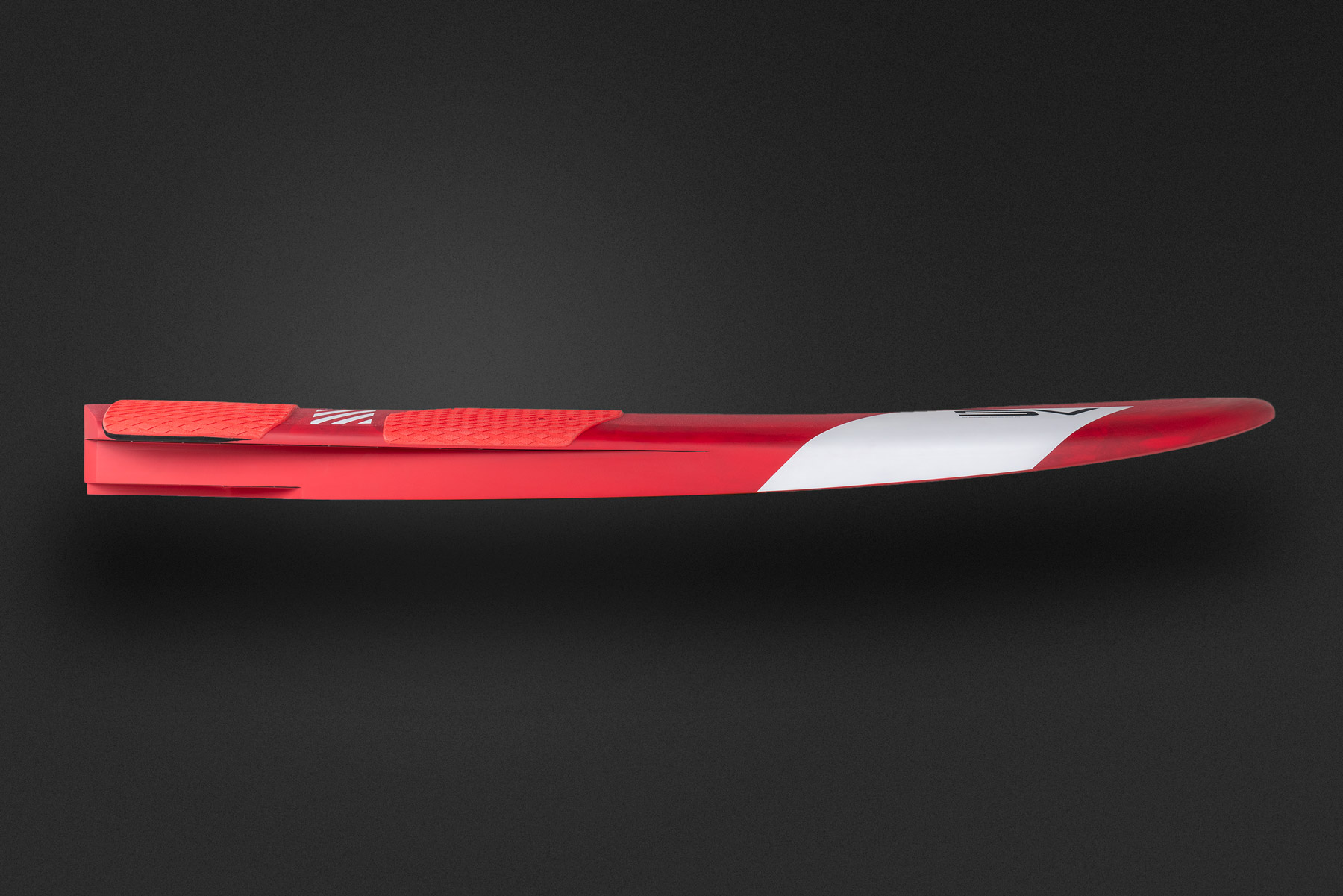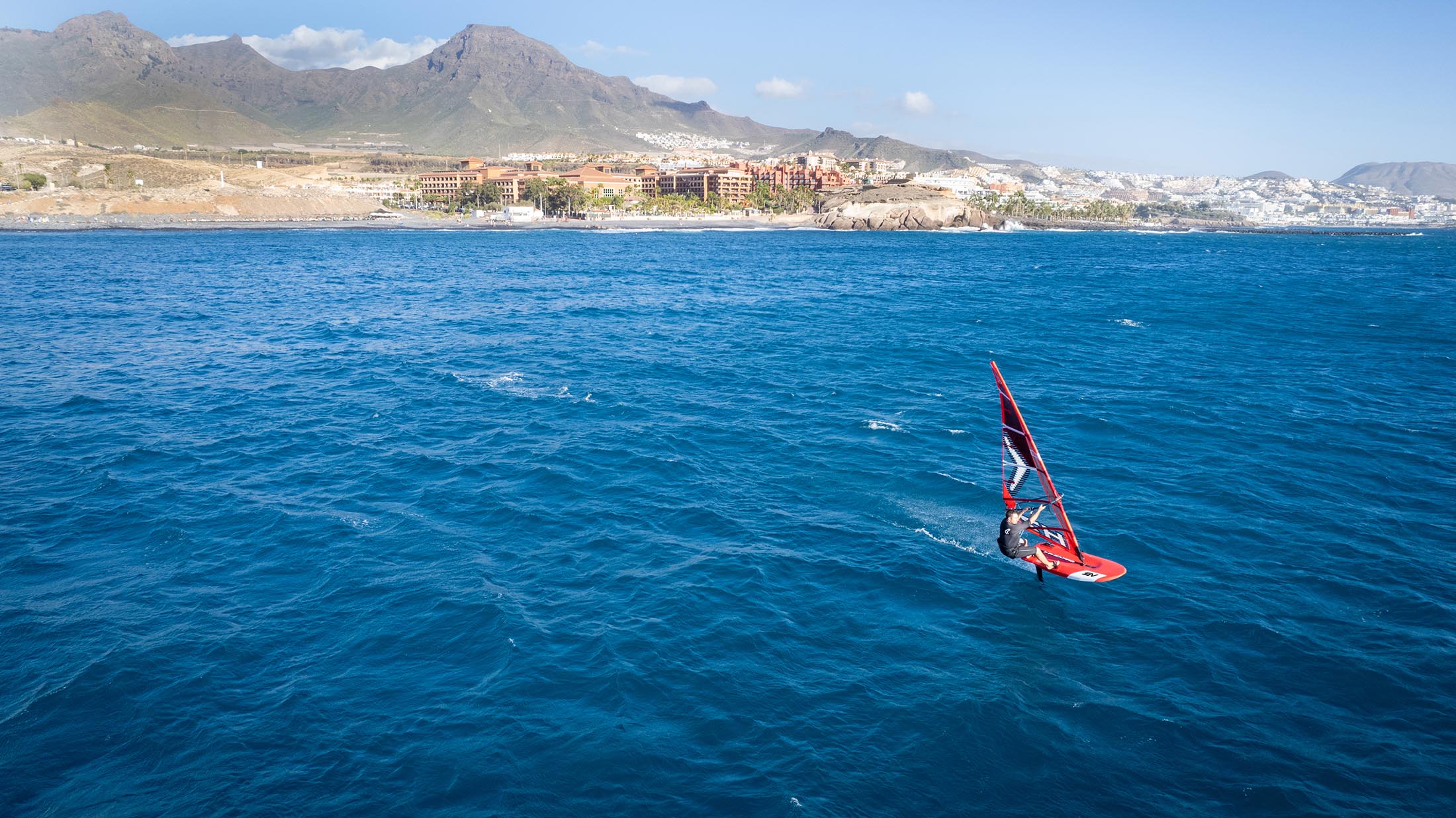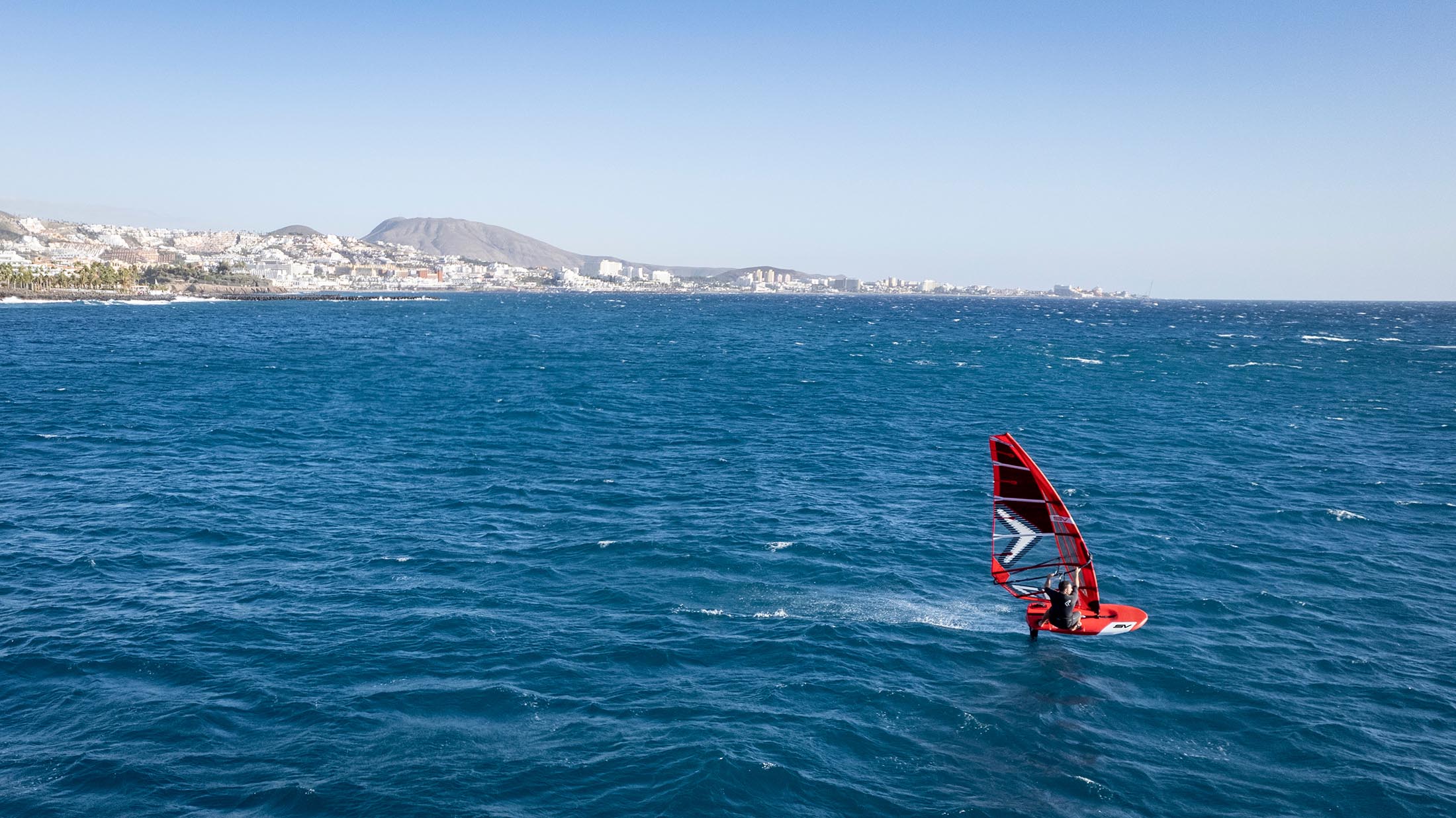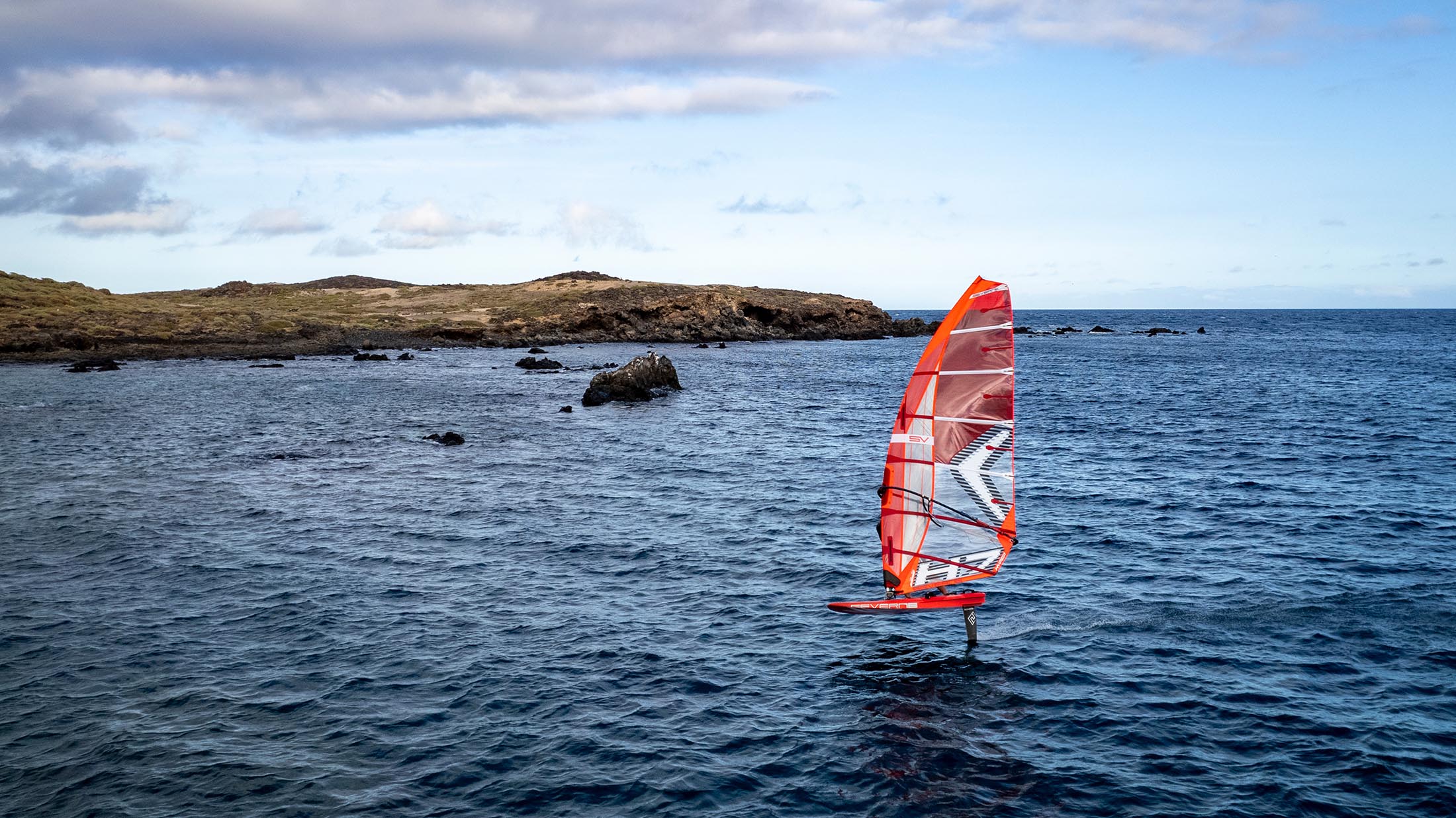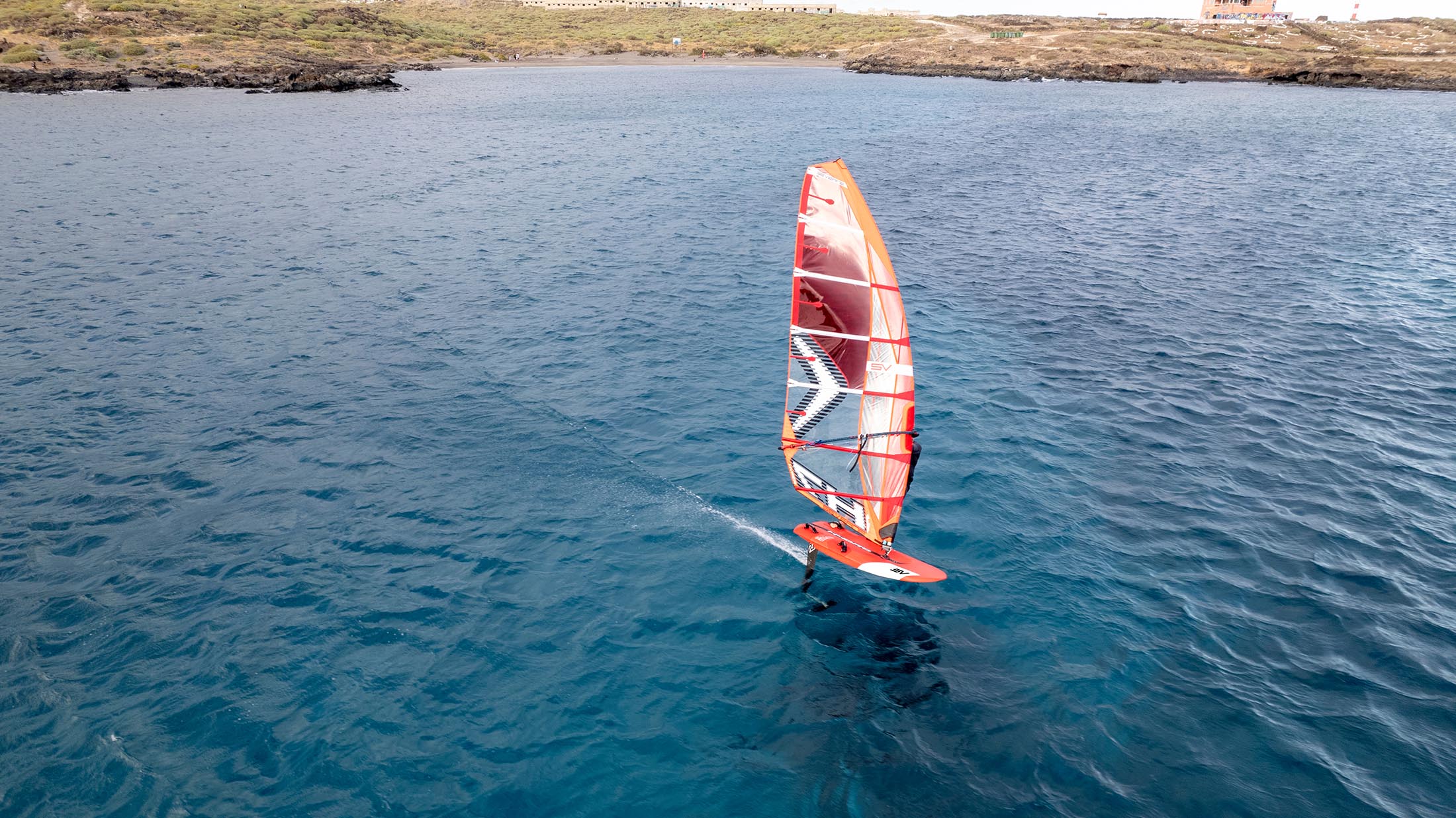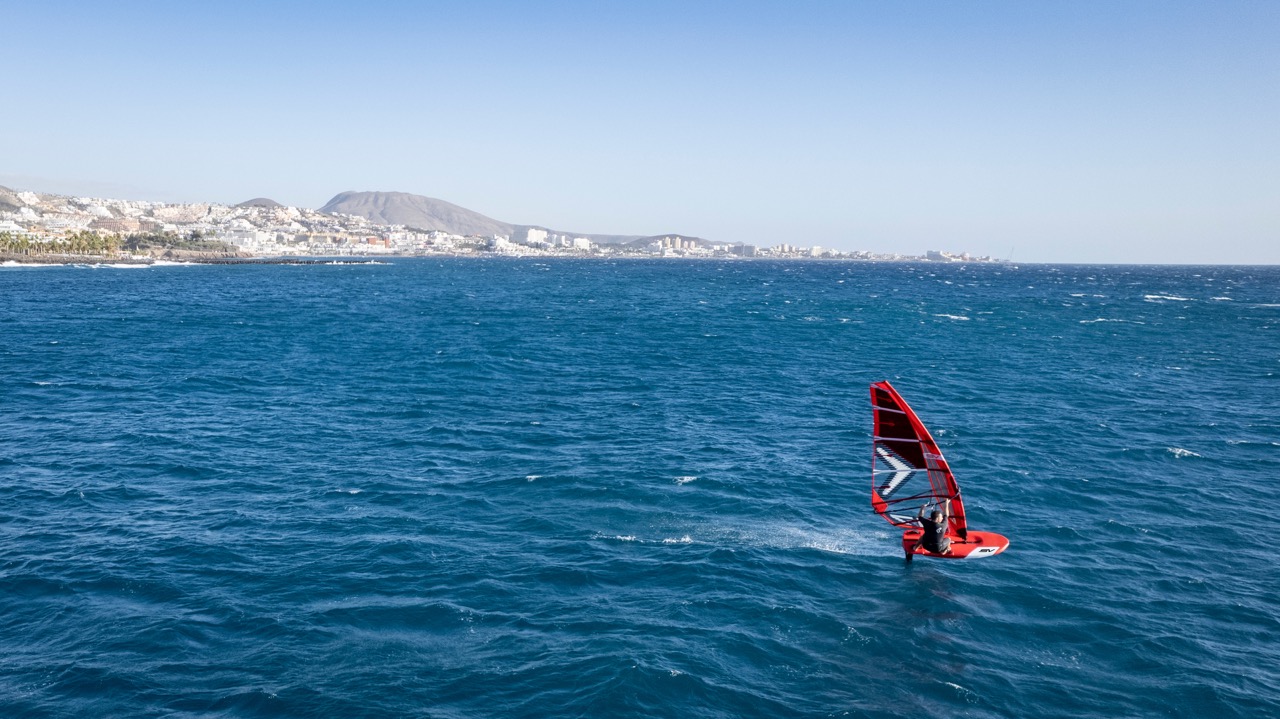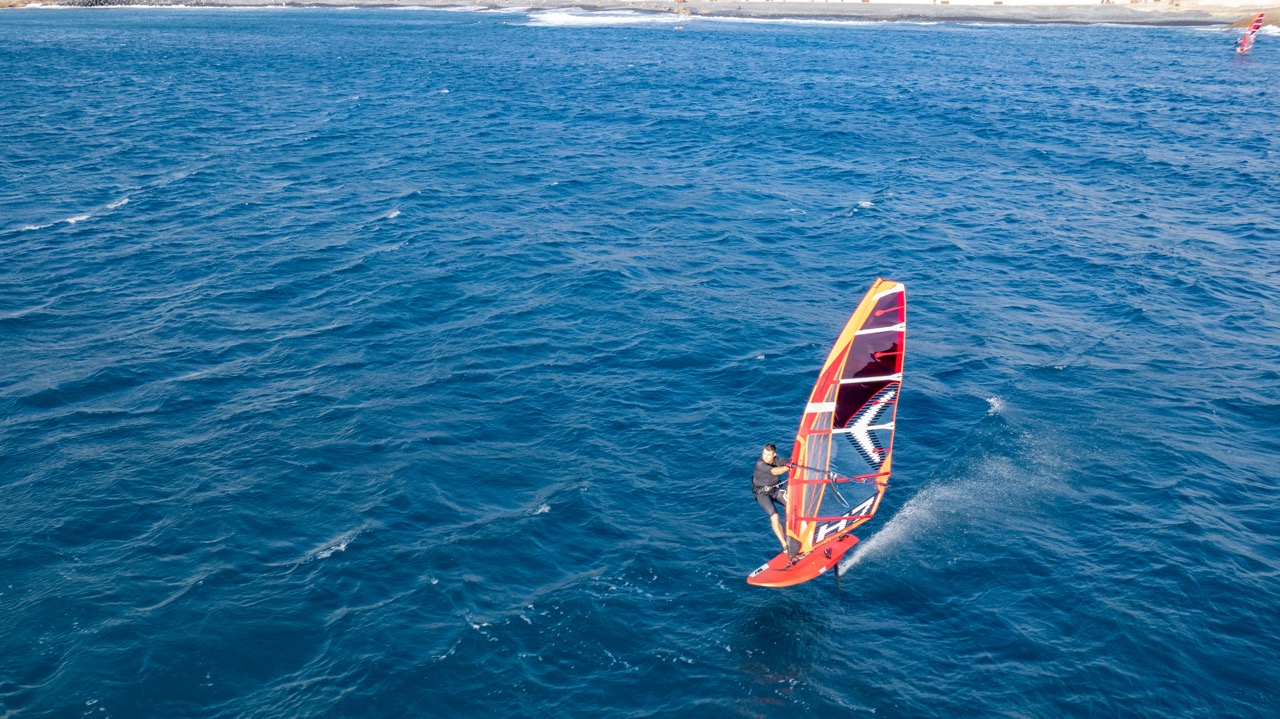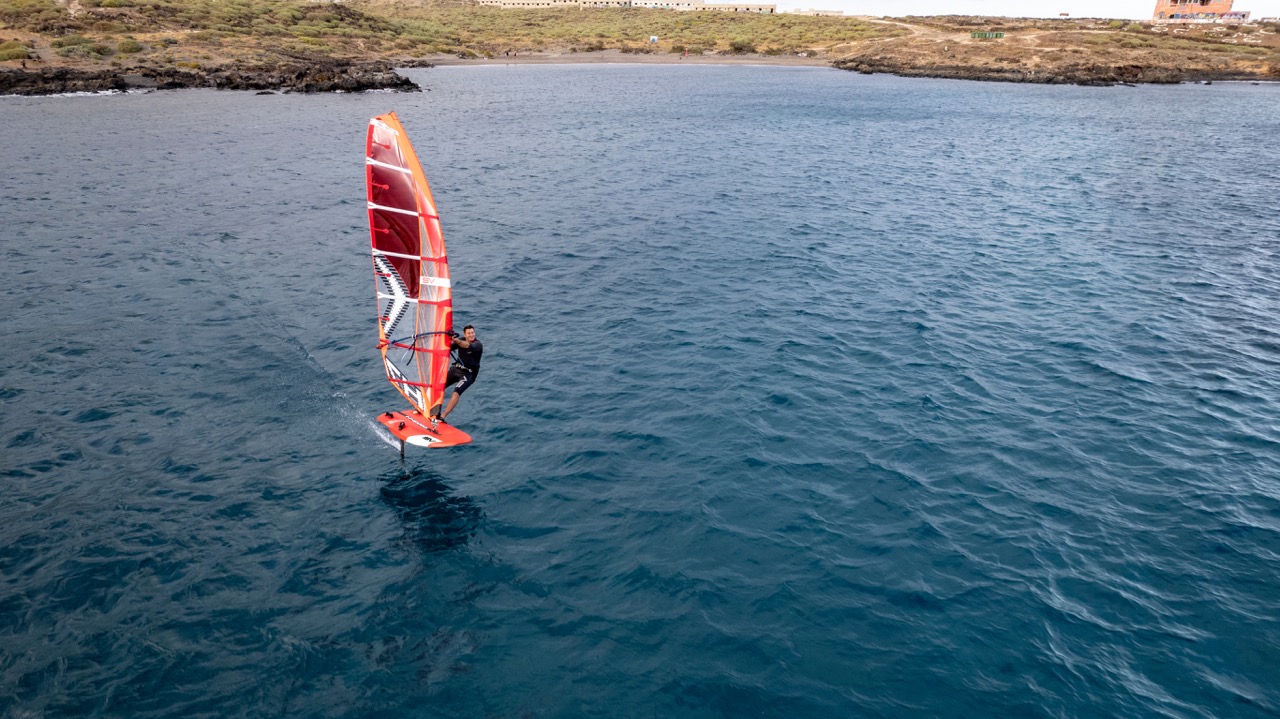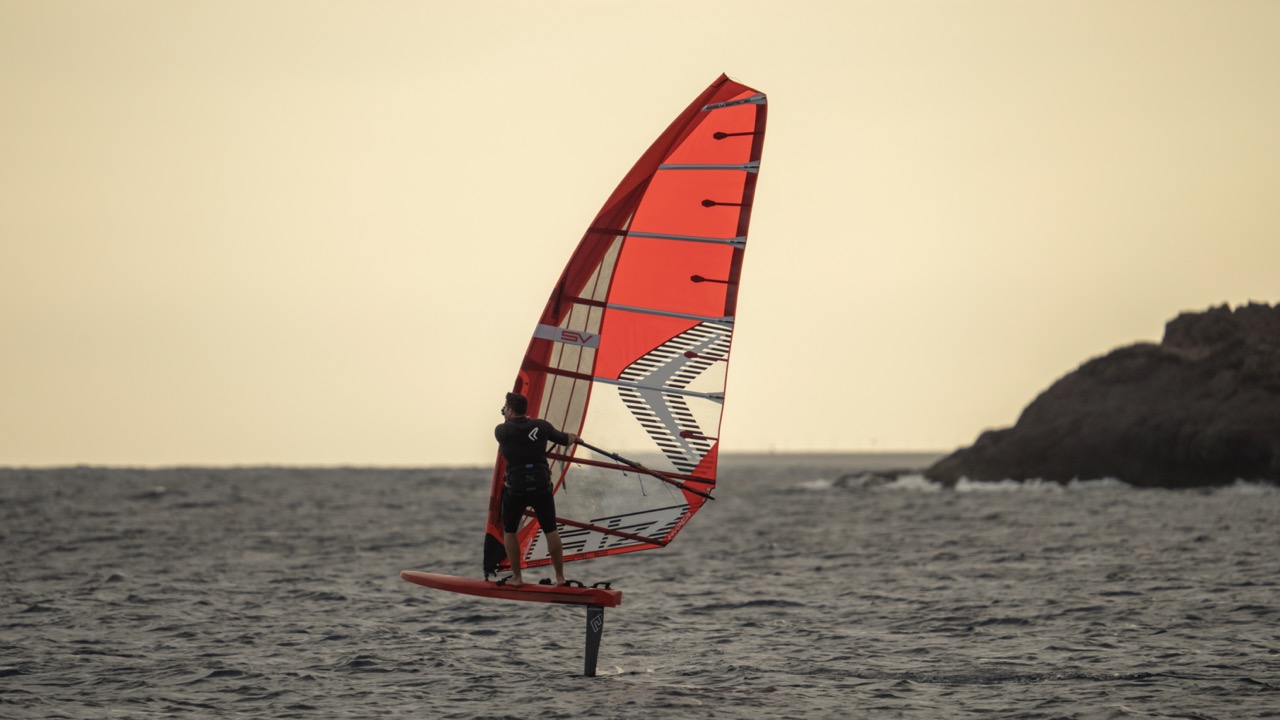HYDRO _FOIL RACE
The Hydro foil race board program is designed using inventive technology and computer modeling for scale tipping performance across all foil racing disciplines.
The Hydro 100 is the upwind/downwind machine featuring an ultra wide tail width, centreline bump, centreline foot strap inserts, and a VMG boosted shape for sails from 8,0 to 11,0.
The Hydro 91, 85 and 79 are foil slalom rockets; designed for “off the wind” reaching angles at high speeds, and to carry sails from 5,0 to 10,0.
Outline and shape focus on minimizing hydrodynamic drag, maximizing aerodynamic performance.
A deep cockpit is a game-changer for ultimate control in gybes, tacking, and balance when going all out.
Deep, pulled in cutouts reduce drag at take-off and minimise touchdown drag characteristics with the addition of a secondary step cutout. The final result; advanced bouyancy, slick release, unlimited boost into the air.
Volume distribution is maximised along board contours for a low drag aerodynamic configuration that allow you to get to those top speeds without effort and maintain stability at high velocities. Push the limit for longer time. Ergonomic pads and comfortable feet position reduce fatigue.
HYDRO _FOIL RACE
The Hydro foil race board program is designed using inventive technology and computer modeling for scale tipping performance across all foil racing disciplines.
The Hydro 100 is the upwind/downwind machine featuring an ultra wide tail width, centreline bump, centreline foot strap inserts, and a VMG boosted shape for sails from 8,0 to 11,0.
The Hydro 91 and 85 are foil slalom rockets; designed for “off the wind” reaching angles at high speeds, and to carry sails from 5,0 to 10,0.
Outline and shape focus on minimizing hydrodynamic drag, maximizing aerodynamic performance.
A deep cockpit is a game-changer for ultimate control in gybes, tacking, and balance when going all out.
Deep, pulled in cutouts reduce drag at take-off and minimise touchdown drag characteristics with the addition of a secondary step cutout. The final result; advanced bouyancy, slick release, unlimited boost into the air.
Volume distribution is maximised along board contours for a low drag aerodynamic configuration that allow you to get to those top speeds without effort and maintain stability at high velocities. Push the limit for longer time. Ergonomic pads and comfortable feet position reduce fatigue.
SPECS

Weight tolerance; (+/- 5%)
TEAM RIDER REFERENCE
MATEUS ISAAC // Height: 183 cm // Weight: 92 kg
Rides Hydro 85 mostly. Hydro 91 for light winds.
ADRIEN MESTRE // Height: 182 cm // Weight: 92 kg
Rides Hydro 79 in strong winds. Hydro 85 for light winds.
Sam Sills // Height: 185 cm // Weight: 93 kg
Rides Hydro 85 mostly. Hydro 91 for light winds.
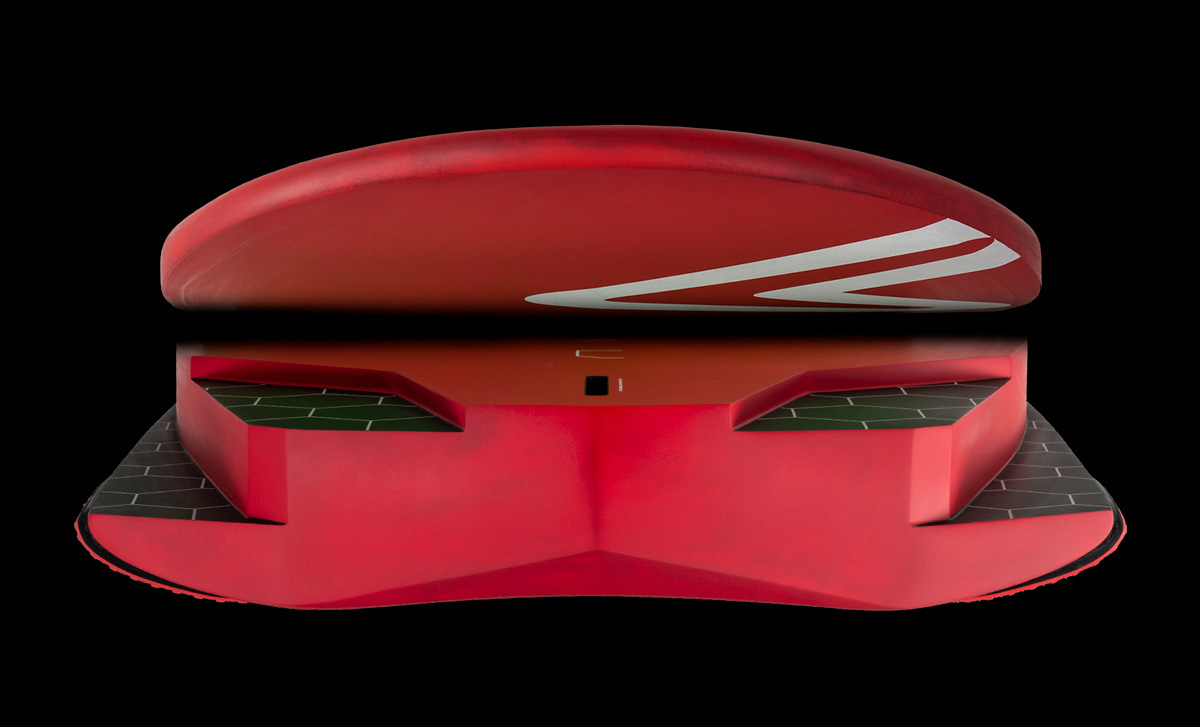
PERFORMANCE GEOMETRY
CONTOURS
A convex deck shape promotes laminar airflow for longer over the board. This is notable during flight.
The high volume and length increase the mass inertia and stabilise the board in the air giving you “Autopilot” level control.
Cutaways help reduce the waterline, making takeoff and touchdowns more efficient.
The high rails give the rider more leverage when canted over to windward and this increases righting moment + forward drive.
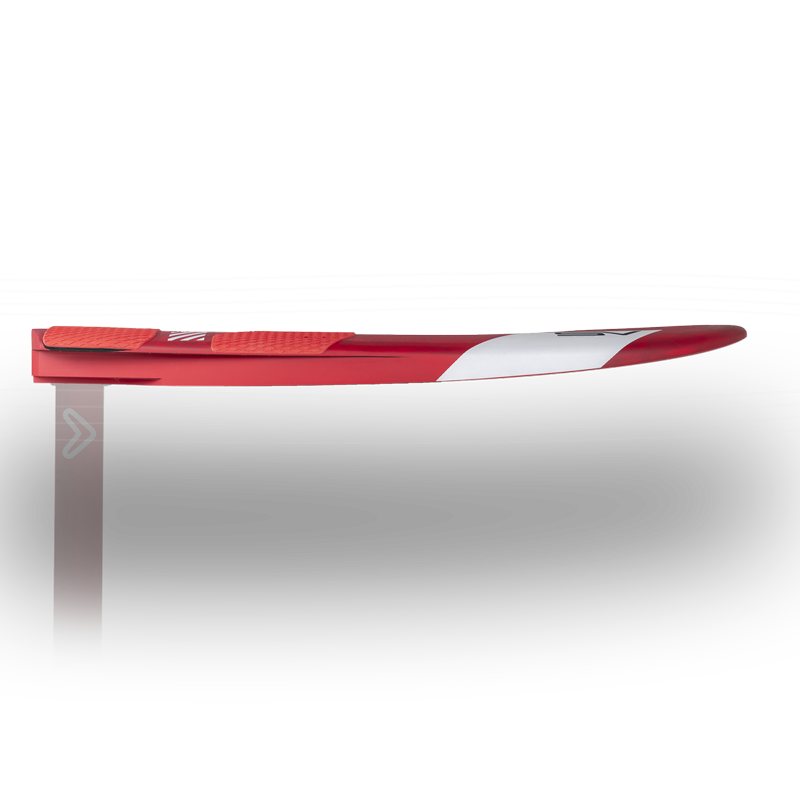
PERFORMANCE GEOMETRY
CONTOURS
A convex deck shape promotes laminar airflow for longer over the board. This is notable during flight.
The high volume and length increase the mass inertia and stabilise the board in the air giving you “Autopilot” level control.
Cutaways help reduce the waterline, making takeoff and touchdowns more efficient.
The high rails give the rider more leverage when canted over to windward and this increases righting moment + forward drive.
“The design of the deck shape combined
with the design of the nose created an extremely stable
board, you feel that the board has no speed boundaries.“
– Cedric Bordes (F-91)
“The design of the deck shape
combined with the design
of the nose created an
extremely stable board, you
feel that the board
has no speed boundaries.”
– Cedric Bordes (F-91)
PERFORMANCE GEOMETRY
HAPTIC SENSE
Ultra Low mast track reduces the lever between centre of effort in the sail and foil and therefore increases forward drive and thus speed.
The tail bump on the deck has two purposes;
/ Gives you a 6th sense when gybing so you
can always find your balance.
/ Provides foot support to pump off when
taking off in lighter winds.
PERFORMANCE GEOMETRY
HAPTIC SENSE
Ultra Low mast track reduces the lever between centre of effort in the sail and foil and therefore increases forward drive and thus speed.
The tail bump on the deck has two purposes;
/ Gives you a 6th sense when gybing so you
can always find your balance.
/ Provides foot support to pump off when
taking off in lighter winds.
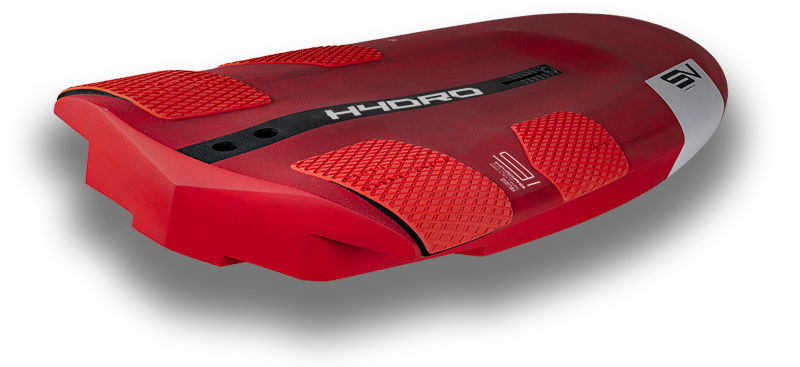
HYDRO RIDERS
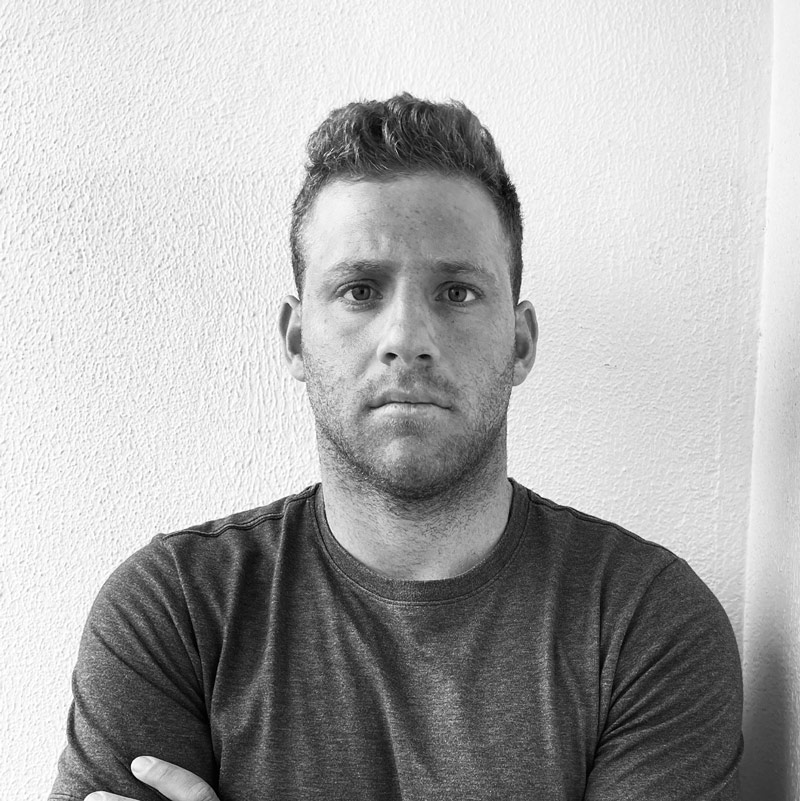
🇧🇷 MATEUS ISAAC
/ RIDER & R&D
/ SAIL NR; BRA-7
/ HOME SPOT; ILHABELA, BRAZIL

🇳🇱 LUUC VANOPZEELAND
/ RIDER
/ SAIL NR; NED-55
/ LAKE GARDA, ITALY & AALSMEER, NETHERLANDS
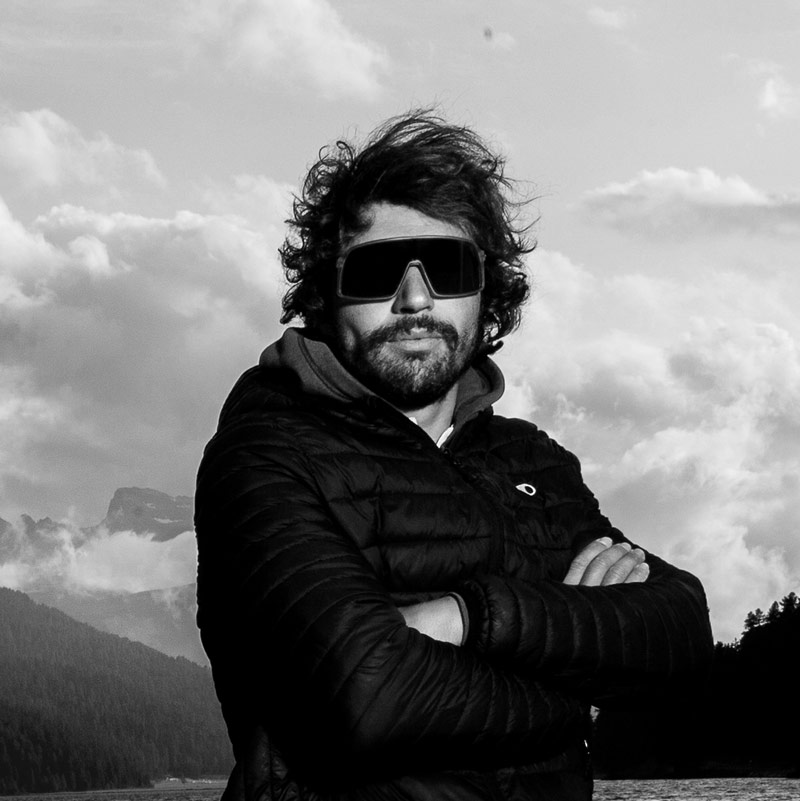
🇫🇷 ADRIEN MESTRE
/ RIDER
/ SAIL NR; FRA-7
/ HOME SPOT; LA ROCHELLE
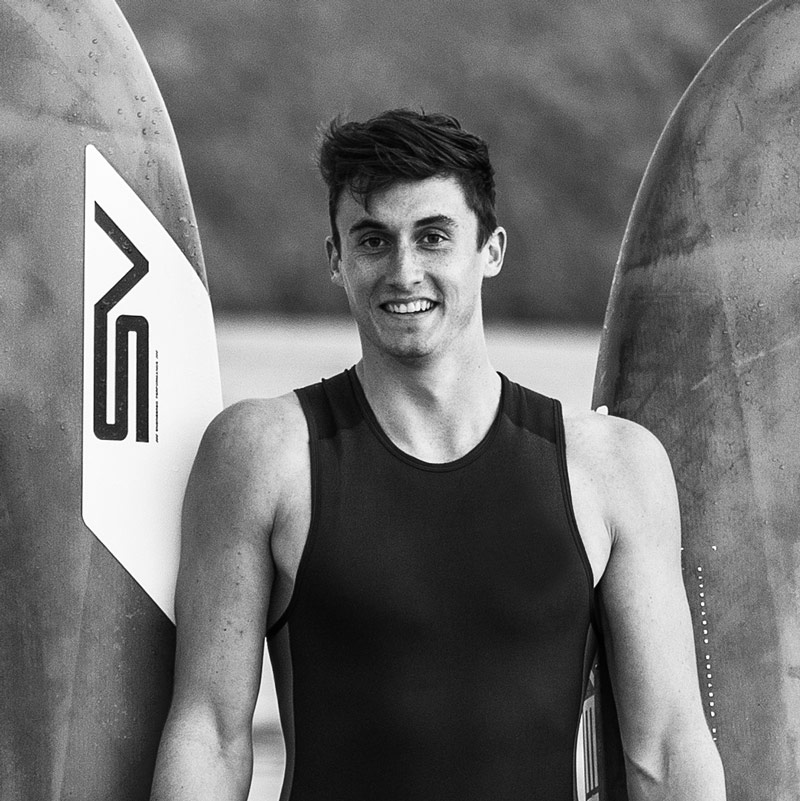
🇫🇷 CLEMENT BOURGEOIS
/ RIDER
/ SAIL NR; FRA-55
/ HOME SPOT; BREST

🇬🇧 SAM SILLS
/ LEAD DESIGNER & RIDER
/ SAIL NR; GBR-60
/ HOME SPOT; CORNWALL, UK & PORTLAND, UK
Who is the Hydro for?
If you own a free-race or race foil setup, this is the board you need.
Is the Hydro built for any specific foil?
The Hydro is compatible with any freerace-race foil, we’ve specifically designed the inserts of the footstraps and mast track to give a huge range of setups. This also means as the foils evolve and setups change, you can always tune the board exactly as needed.
Why is the Hydro longer than other boards?
The longer length has multiple purposes, starting with stability, if you’re pushing speeds above 25 knots you need longitudinal stability. That comes from increasing the mass inertia and gyradius of rotation. Greater mass inertia = damped oscillations. Damped oscillations = less movement = higher speeds and control.
The length also reduces the violence of catapults. Boards that are too short can cause serious injury from heavy touchdowns. If the nose does not have length and volume or length to support a heavy touch down it will partly submerge and cause ultra rapid deceleration often leading to severe whiplash injuries and broken equipment.
Another benefit is it allows us to control the airflow over the board onto the rig, having a smoother transition to the rest of the board creates less air pressure build up at the nose and allows you to accelerate.
You will notice on the 100 that the board is 218.5cm instead of 220. This is because 100 wide boards have lower top speeds and we deemed that in a critical race situation, every second to get back on the foil after a tack can be the difference between winning and losing. We, therefore, shortened the length a tiny amount to increase total flight time throughout an upwind/downwind race.
With the Slalom Hydros, having higher top speeds on the reach is the highest priority.
Which sail can I use on the Hydro?
Hyperglide from 5,0 – 8,0 work well, along with freerace sails.
WHAT IS THE PANTONE COLOR CODE FOR THE HYDRO?
The pantone code for the Hydro are 186C, White and Black.
Where is the ideal mast track position?
You should tune the board to feel balanced at max speeds, where to put the mast track will depend on your foil and rig setup. But just keep the basics in mind, start in the middle and move forwards or back 1cm each time until your board is perfectly balanced at top speeds.
Where should I place my foot straps?
Start in the middle holes, if you feel you need more lift move them back 1 at a time. if you feel you have a very powerful foil and you need to have more weight forward, you can move them forward 1 at a time.
On the back strap, you can choose between an outboard powerful setup or an inboard control setup. We would recommend starting with the outboard position and if you feel you need to take your back foot out on the reach due to being overpowered, you can move it to the control position inboard.
My footstraps are too wide. Can I make them narrower?
You can rotate the plastic inserts at each end of your footstrap to decrease its width for a tighter fit, as demonstrated in this video.


